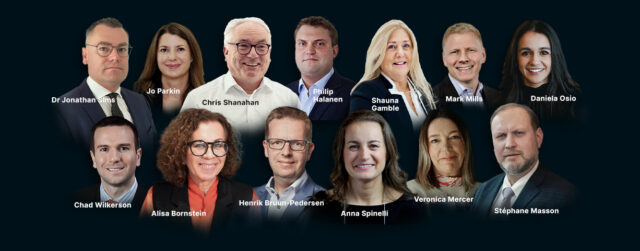Innovation in procurement technology has not moved on much in the past decade, however the impact of COVID-19 and supply shortages expected as a result have certainly focused minds and shone a light on procurement sourcing. In fact, according to the UN’s Deputy-Secretary-General, Amina J. Mohammed: “Companies should focus on scaling up production, making sure supply chains are reliable.”
Finding the route to the ‘new normal’
What we are seeing is that organisations are trying to get a handle on the route back to the ‘new normal’ and emerge out of this crisis stronger than before. This means we will see a couple of years of real accelerated change, in fact according to Arvind Krishna, CEO of IBM, COVID-19 is likely to push companies to speed up their adoption of modern technologies like artificial intelligence and cloud.
For many procurement and supply chain professionals, the dramatic events of the last couple of months – including lockdowns, quarantine, production stops – were a wake-up call. Following the firefighting mode during the pandemic, companies have realised that they can no longer afford to be unprepared for such an event in the future.
Building resiliency into the supply chain
Securing the supply chain to ensure that it is not negatively impacting the ability to meet customer commitments will be crucial. CPOs & CSCOs will want to know if there are any supply chain issues so they can quickly source alternative solutions. They also want to know what projects they need to prioritise following the crisis because, compared to earlier in the year, priorities have more than likely changed.
CPOs will be keen to understand what key projects they need to undertake to drive the organisation’s revenue and success. Outside of this, CPOs & CSCOs will also be looking at how to extend and enhance their supply network and how they can better understand their dependence on that network. Ultimately, short term they will be looking at how they transform their supply chain risk management processes and build in resiliency to not only survive but thrive.
To this point, Deloitte recently published an excellent overview around managing supply chain risk during COVID-19, and I would highly recommend this report to anyone involved in developing improved supply chain practices for their business.
Resiliency will be the post COVID-19 watchword
This need for resiliency provoked us to develop a bespoke version of our Vizibl Supplier Collaboration and Innovation solution (Vizibl Resilience) that focuses on the need for companies to address these issues. We expose the critical projects that customers need to work on in the supply chain and have easy to use dashboards to be able to report critical information to the Board.
It is important to ensure that everyone is sharing information in an efficient way rather than individual-by-individual via email or phone. Businesses need to have the right collaboration technology to underpin their procurement sourcing, to solve problems faster. For many CPOs working remotely with their teams, perhaps for the first time, this level of shared visibility is vital.
Vizibl Resilience ensures that all communication, actions, and results from vendors working throughout the supply chain are captured in real-time within a single, easy-to-navigate platform. Dashboards give the leadership team transparency around where the business is at in any point in time on any number of projects. This enables the organisation to identify any issues within those projects and quickly triage those that need attention.
Building supply chain innovation
Of equal importance to visibility, collaboration and control is building innovation into the supply chain.
If we look at an industry such as telecommunications and take Vodafone as an example – historically, generating revenue for the business has been very network bandwidth-orientated. Now Vodafone and its peers are required to build additional services on top of these networks, enabling them to differentiate. We are working with Vodafone looking at the new projects and innovations which are coming from their suppliers such as Huawei, Google, Nokia and establishing how Vodafone can bring those to market faster. We have been helping them to identify which ones are aligned to their business goals and how they can accelerate these projects.
Removing costly duplication
But what we have seen historically is that as companies start to do this, so duplication creeps in. Often, we find that a very similar project is happening in a different part of the organisation at the same time. By deploying Vizibl, we are able to shine a light on the duplication and show that elsewhere in the organisation there are two or three projects which are the same or very similar, which could be brought together.
While saving money is one aspect, the other aspect is about getting various project teams to collaborate and get projects to market faster.
No second chances
In just a few months, COVID-19 has triggered sweeping changes in how we all do business. This massive scale disruption created a succession of different supply chain issues. These issues are not necessarily new, but what has changed is that, going forward, not being prepared for such issues is no longer an acceptable position. With supply chains firmly in focus boards are pushing for a more proactive approach and level of insight and visibility.
Now the CEO will be asking the CFO, COO and CPO: is the supply chain prepared? During the pandemic, companies scurried to secure supply. During recovery, the CPO needs to initiate measures that lead to preparedness. They’ll be no second chances for CPOs going forward. This means being prepared must be an integral part of sourcing and supply chain management.











